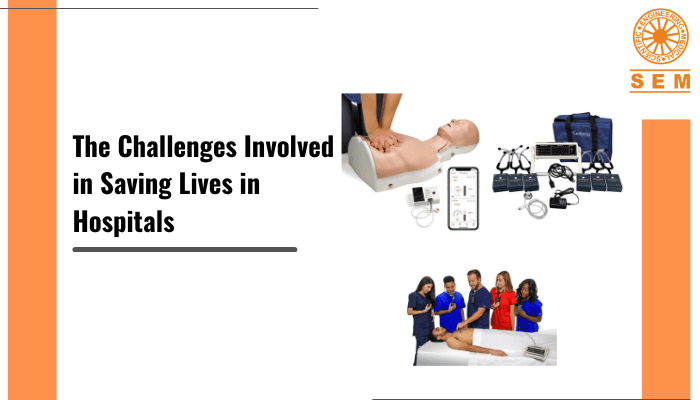What are the Challenges Involved in Saving Lives in Hospitals?

The responsibility of saving lives that befalls our hospitals and the Indian healthcare system as a whole is thwarted by the several challenges it faces on all fronts. Together, these can affect not only the quality of care delivered but whether people seek that care at all.
Lack of Awareness
The first challenge to delivering effective healthcare is a lack of awareness in the public. From ignoring their symptoms and believing they don’t need treatment to more concrete barriers like affordability and a lack of resources, a lot of things get in the way of saving lives. This may be attributed to factors like poor education, poor functional literacy, and a low priority for health.
Lack of Access
Even those who are aware may not have access to quality healthcare owing to financial, organizational, social, and cultural barriers, even in places where they are available. This brings us to physical accessibility. Living further away from town increases the odds of disease, malnourishment, weakness, and premature death.
Shortage of Healthcare Workers
Not only do hospitals need to have an adequate number of working personnel, they need people who are appropriately trained and employable. By introducing simulation-led training in our medical and nursing curricula, we can create more prepared and capable healthcare workers in the future.
A 2019 study discovered that we only have one doctor for every 1457 people and 1.7 nurses for every 1000 people. And the manpower we do have is distributed unevenly as most prefer to work in more developed areas where their own quality of life and that of their children will be superior. The public healthcare system is also not allocated enough funds. This difference in quality of care drives people to prefer private healthcare, which is often not affordable for most. People in rural areas are discouraged and less likely to seek treatment when they travel far to government-run healthcare facilities and find a lack of qualified professionals and inadequate infrastructure.
Additionally, we only have one bed for every 2,239 people. These shortages in personnel, PPE kits, oxygen cylinders, and ambulances posed great challenges in saving lives during the COVID-19 pandemic.
The Cost of Healthcare
The inconsistent costs and lack of cost regulation in the private sector often ends up as huge medical bills, specially in emergency cases. For example, because many families aren’t able to shoulder the increasingly high costs of infant care and pre-natal surgical procedures, the infant mortality rate in India is one of the highest in the world. In contrast, public healthcare facilities are cheap or free, but unreliable.
Poor Soft Skills
The ability to effectively communicate with the patients and their frustrated family members, and within the team itself is crucial to the success of a case more than you’d think. Theory alone will not prepare individuals for dealing with patients, so a good way to build communication skills and other soft skills is to incorporate simulation-led training.
Lack of Openness to Digitalization
Another challenge faced is the lack of openness to digitalization among the hospital staff. For several reasons, as the world becomes increasingly digitalized, hospitals need to catch up too. But not everyone may be comfortable with incorporating it to refine existing procedures. Doctors may also be set in their ways and show no interest in learning the new tools.
Less Emphasis on Preventive Care
Preventive care can usually solve a lot of problems in terms of misery and financial losses, and avoid worse problems along the road. But most people either don’t know or don’t care about general preventive care. This not only saves money for the patient, but also reduces the burden on the limited healthcare infrastructure.
As we advance technologically, with more facilities, there will always be newer challenges to address. What’s important is to keep going forward and create a reliable healthcare system for everyone.
More Blog:
Medical Simulation Training: Market Share, Projected Growth
Follow us on Social Media :

